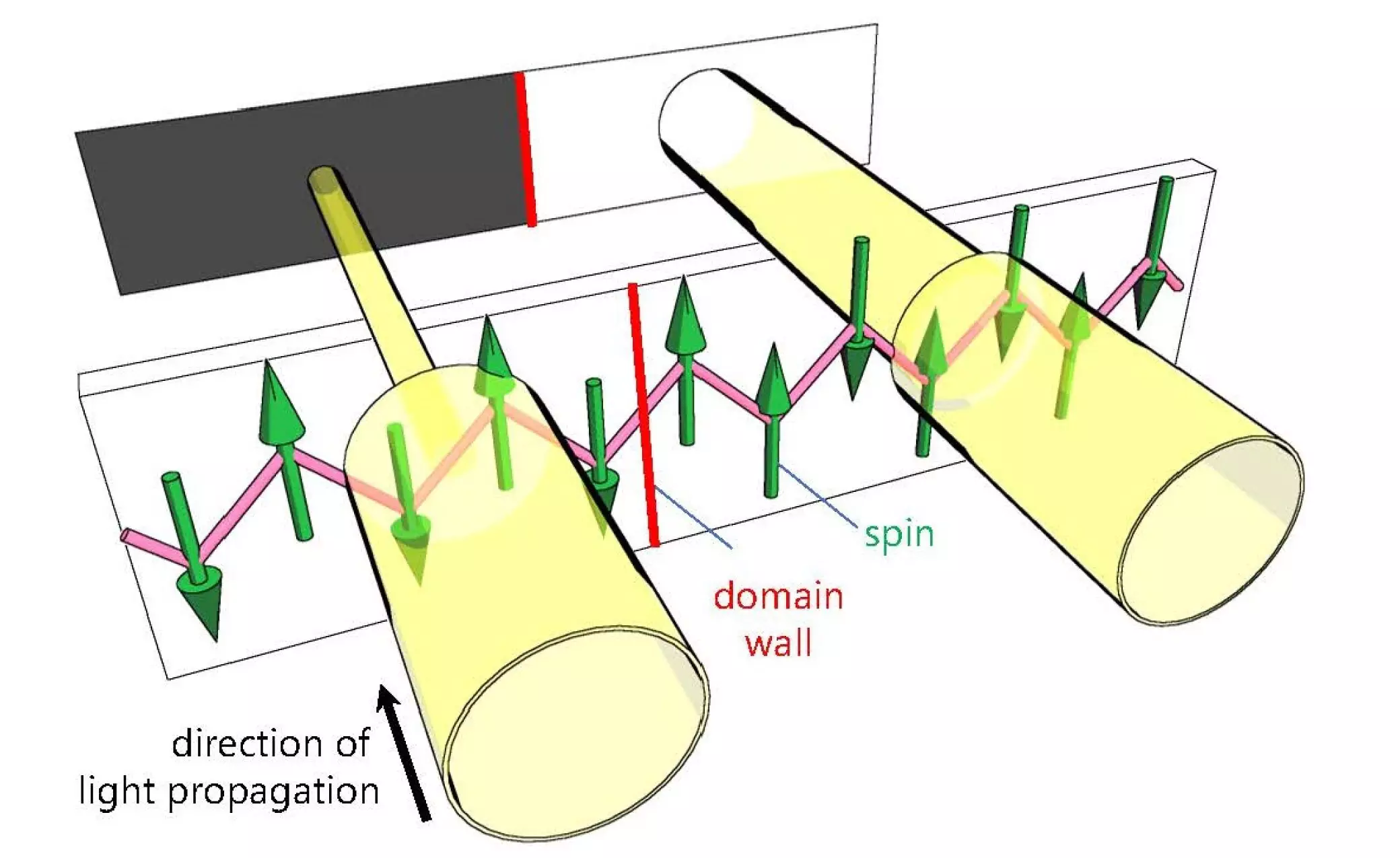The intrigue surrounding magnets has captivated scientists for centuries, yet the realm of quantum materials presents a complex tapestry of magnetic phenomena that continue to puzzle researchers. Recently, collaborative efforts by scientists from Osaka Metropolitan University and the University of Tokyo have illuminated one of these mysteries. Their groundbreaking work, published in *Physical Review Letters*, involves using light to visualize intricate magnetic domains in a specialized quantum material, known as BaCu2Si2O7, while also manipulating these domains with an electric field. This dual capability promises to reshape our understanding of magnetic materials and their potential applications in future technologies.
When we think of magnets, we typically envision those that cling to metal surfaces. However, within the fascinating world of antiferromagnets lies a different story. These materials, characterized by opposing magnetic spins, present a unique challenge: the spins cancel each other out, leading to the absence of a net magnetic field. This enigmatic behavior diverts from regular ferromagnetic materials, which exhibit distinct north and south poles. Antiferromagnets, particularly those demonstrating quasi-one-dimensional properties, are gaining significant attention in the tech industry as candidates for cutting-edge electronic and memory devices. Their magnetic properties are primarily confined to one-dimensional atomic chains, establishing them as novel players in the field of quantum materials.
Despite the promising applications of antiferromagnetic materials, studying them poses considerable challenges. Their low magnetic transition temperatures and minute magnetic moments hinder traditional observation methods. Kenta Kimura, an associate professor at Osaka Metropolitan University and the lead author of the recent study, noted the complexities involved in observing magnetic domains within these quantum materials. Magnetic domains themselves are small regions where atom spins align uniformly, while the boundaries separating these regions are known as domain walls.
Recognizing that conventional techniques fell short, the research team harnessed a novel approach using nonreciprocal directional dichroism. This fascinating phenomenon allows alterations in a material’s light absorption based on the direction of the light or its magnetic moments. By applying this technique to the quasi-one-dimensional quantum antiferromagnet BaCu2Si2O7, they could visualize the magnetic domains, revealing that distinct oppositional domains coexist within a single crystal.
The significance of direct observation in scientific studies cannot be overstated. Kimura emphasized this point when he stated, “Seeing is believing and understanding starts with direct observation.” By utilizing an optical microscope, the research team successfully visualized the magnetic domains of these quantum antiferromagnets, marking an exciting advancement in the field. The findings demonstrated that the domain walls aligned primarily along specific spin chains, offering insights into the arrangement and behavior of these elusive magnetic regions.
Moreover, the capability to manipulate these domain walls through the introduction of an electric field highlights an intersection of magnetic and electric properties—an area known as magnetoelectric coupling. This phenomenon allows researchers not only to visualize domain walls but to shift their positions while maintaining their original orientation. Kimura aptly pointed out, “This optical microscopy method is straightforward and fast, potentially allowing real-time visualization of moving domain walls in the future.”
This pioneering research opens the door to numerous possibilities for technological applications, fundamentally altering the landscape of quantum materials. The team’s findings could drive the development of innovative quantum devices and broaden our understanding of fundamental physics principles. Kimura expressed optimism regarding the study’s impact, suggesting that applying the observation technique to other quasi-one-dimensional quantum antiferromagnets could yield insights into how quantum fluctuations influence magnetic domain formation and movement.
As researchers venture into the intricate details of antiferromagnetic materials, they uncover the potential for designing next-generation electronics that leverage these unique magnetic characteristics. The findings not only enhance our comprehension of quantum behaviors but also pave the way for future discoveries.
The collaborative research led by Osaka Metropolitan University and the University of Tokyo signifies a critical milestone in the observation and manipulation of quantum magnetic materials. By unraveling the complexities associated with antiferromagnets, this study offers a compelling glimpse into the future of technology and physics. As we continue to explore the quantum realm and its extraordinary properties, the implications for electronics and memory devices are vast, driving innovation and fueling the quest for advanced technological solutions.


Leave a Reply